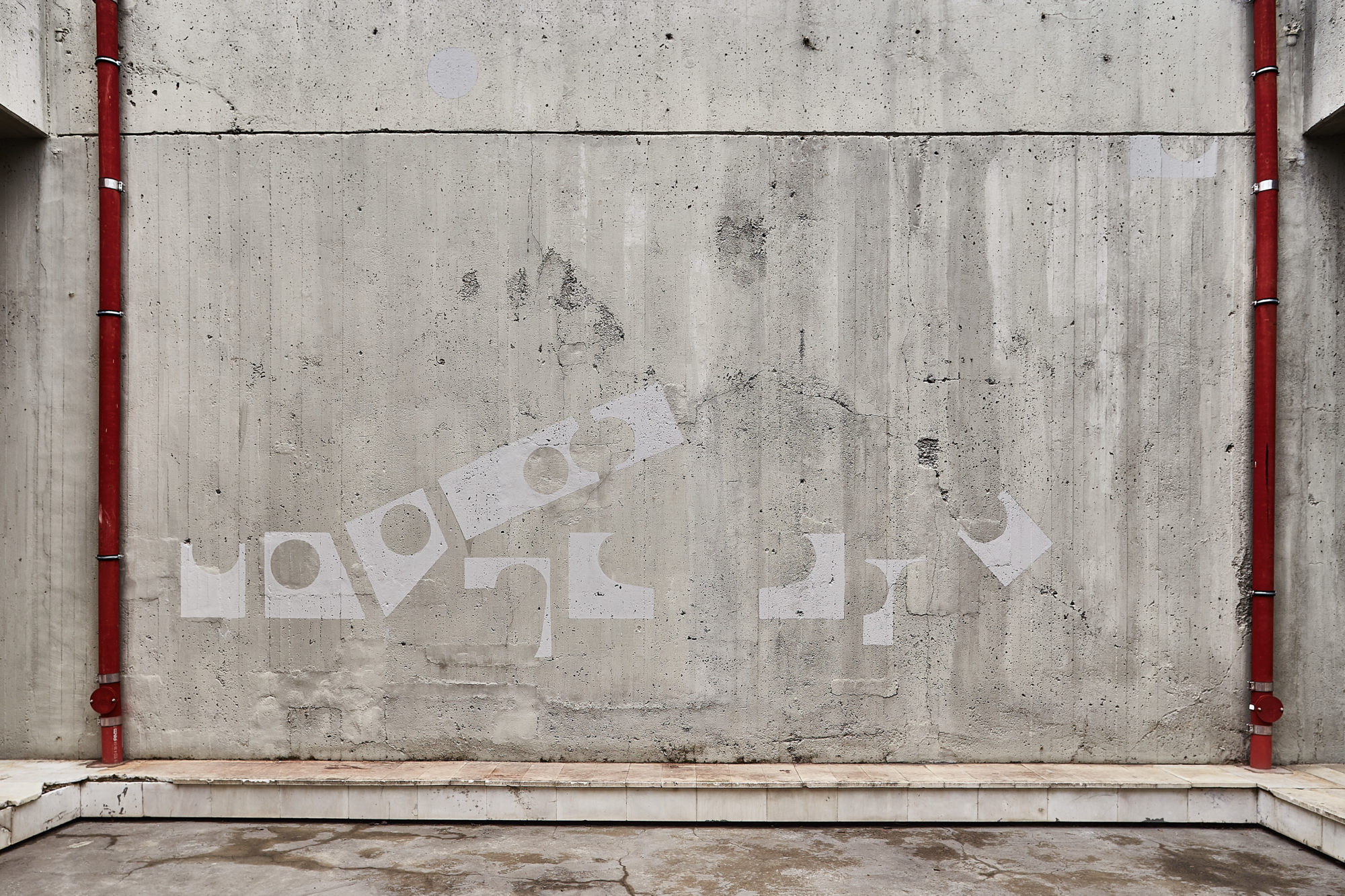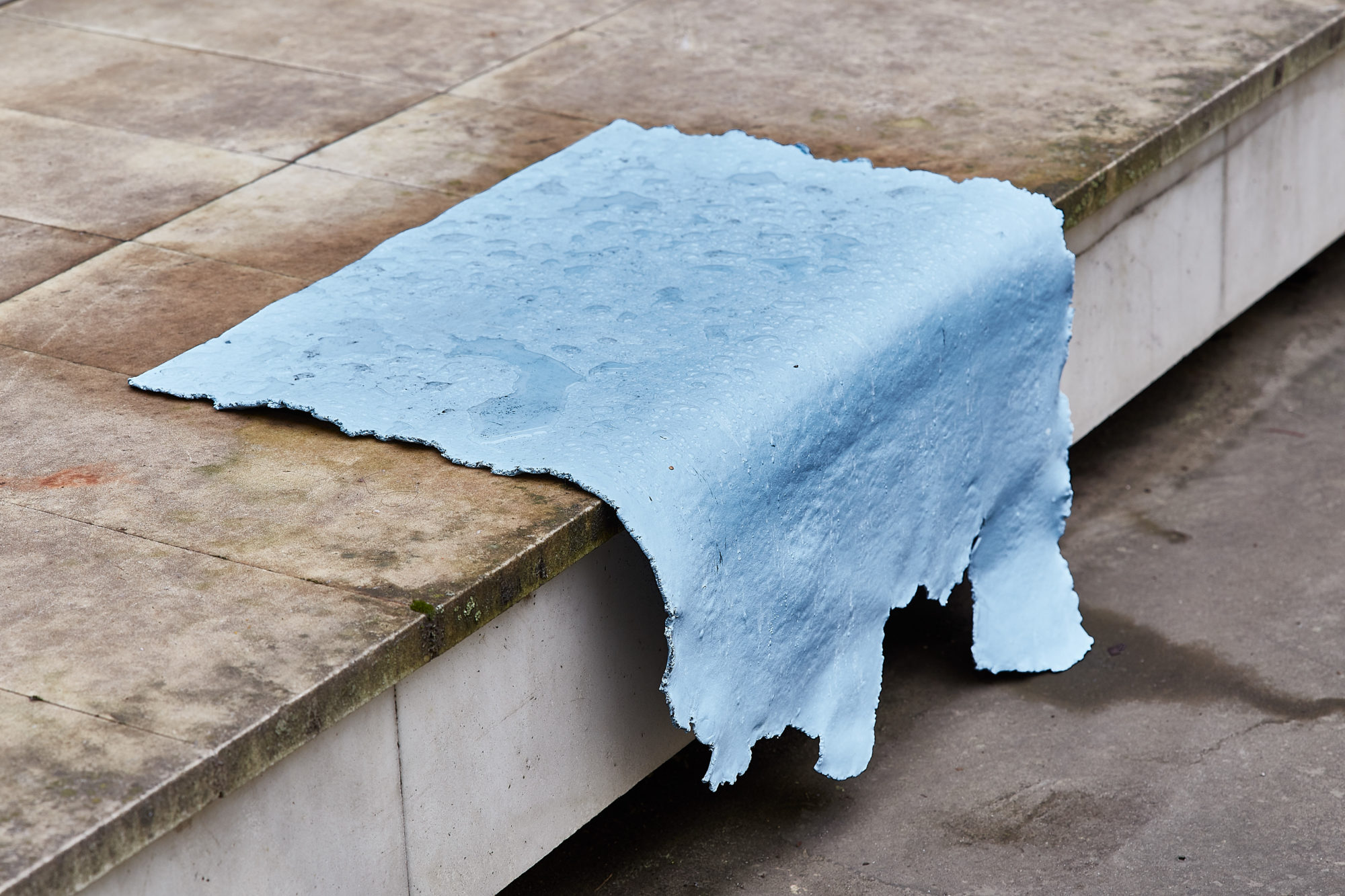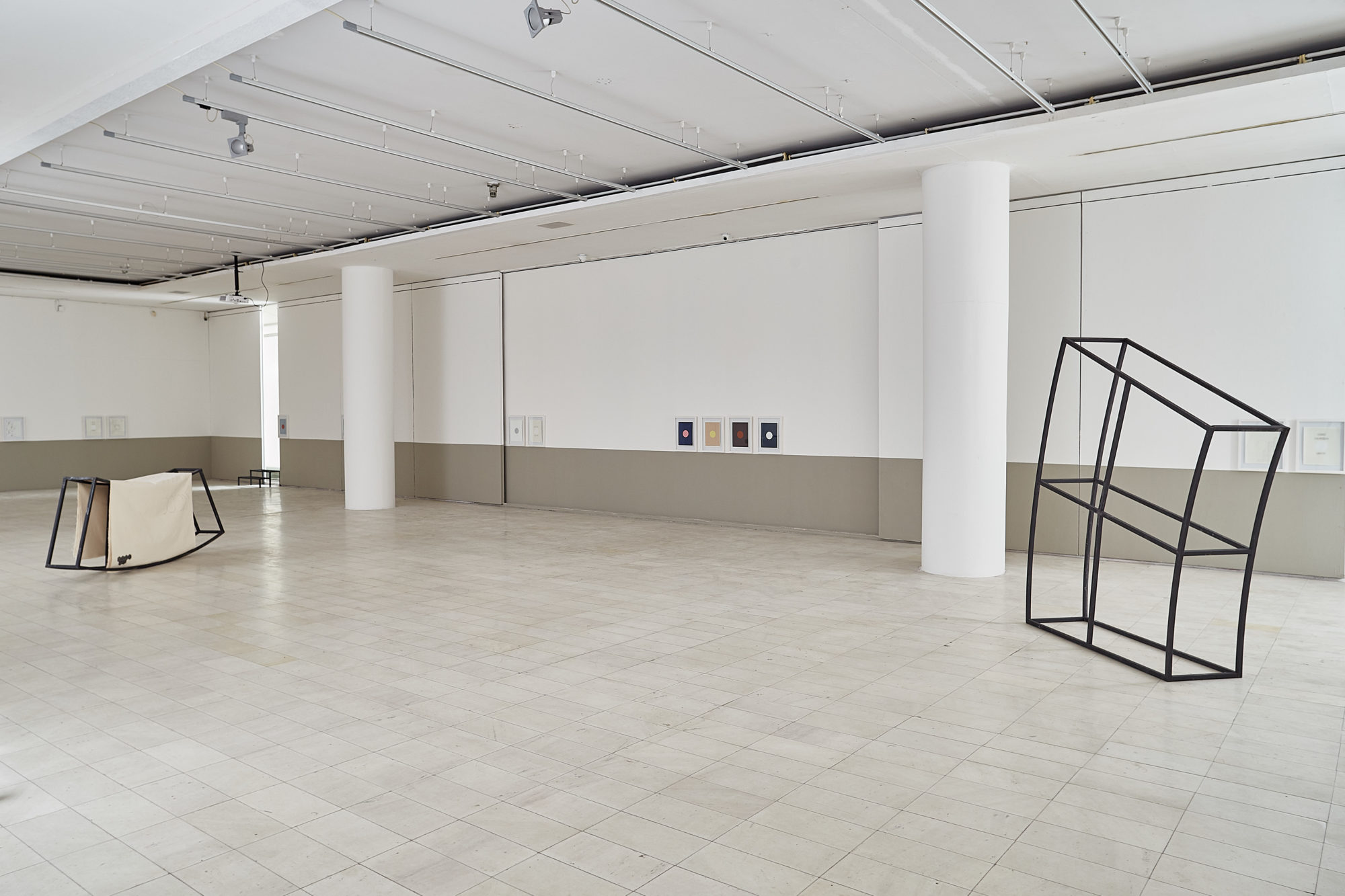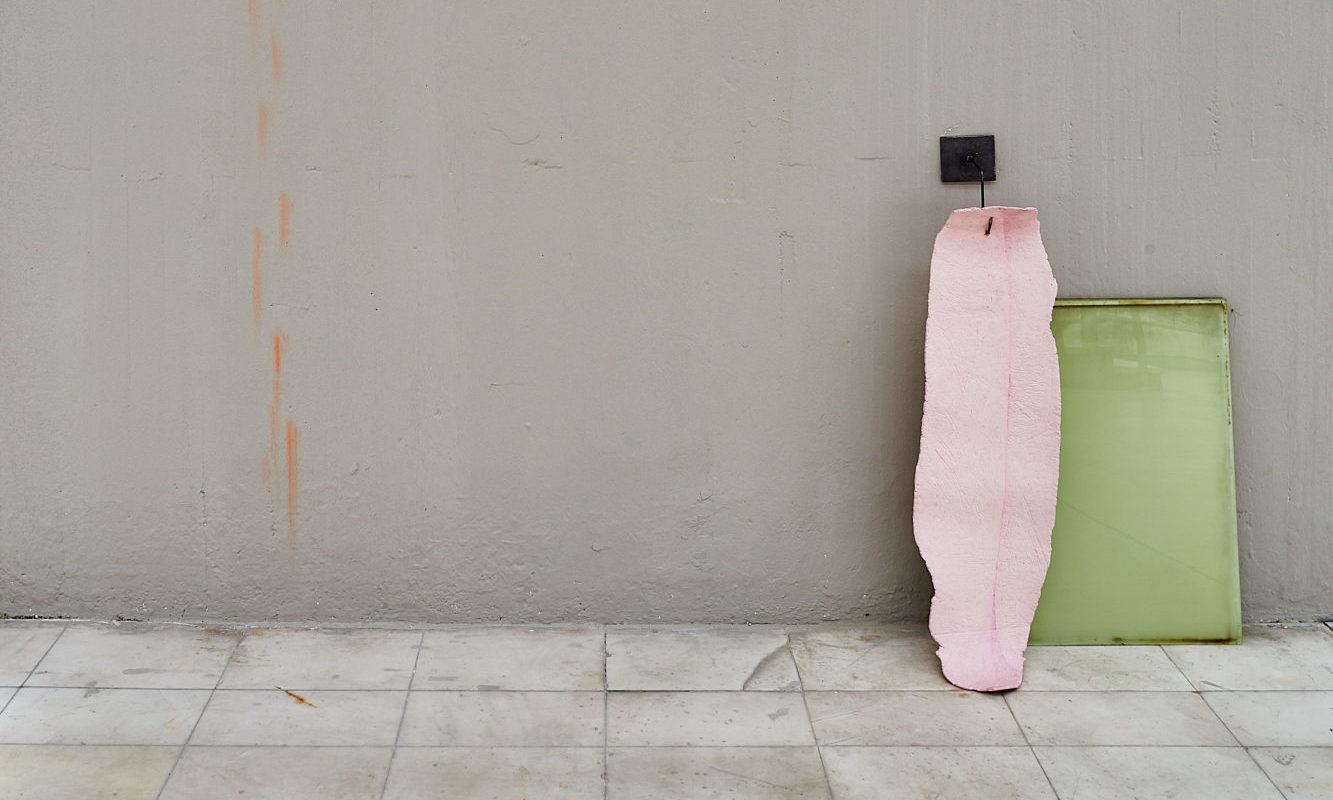Yane Calovski and Hristina Ivanoska: Epilogue (Form of an Argument)

Yane Calovski and Hristina Ivanoska, Assembly of Spirits, installation view, 2018 [photo: Vase Amanito; courtesy of the artists and Museum of Contemporary Art Skopje, Skopje, Macedonia]
Share:
Occupying two ground-floor galleries of the Museum of Contemporary Art (MoCA) – Skopje, Epilogue (Form of an Argument) was something of a karmic exhibition: one of those rare instances when artists and their work come home to roost.
Since 2007, Yane Calovski and Hristina Ivanoska’s collaborative work has investigated, imagined, and speculatively enacted Polish architect Oskar Hansen’s 1966 Process and Art, an unrealized proposal for their hometown’s Museum of Modern Art. With Epilogue (Form of an Argument), they returned to the intended site of Hansen’s iterative museum, whose galleries were to be literally configured anew by each exhibition.
Hansen’s proposal responded to the devastation of Skopje’s 1963 earthquake by affirming culture’s leading role in civil society. Calovski and Ivanoska’s exhibition picked up its subterranean tremors. Mobilizing site-specificity and institutional critique, the artists provocatively unfolded Hansen’s almost forgotten project in the exhibition space. The installation 9 Principles of Open Form (2018) reconfigured the first gallery, revealing its architectural envelope and letting in daylight. Near the entrance, a series of 10 exquisite posters provided a key to the artists’ recombinant use of color, form, typography, and movement extrapolated from Hansen’s theories. Three sculptures titled Shell, Divided (2018)—literally, parts of Calovski’s sculpture Shell (2011) now in MoCA’s collection—either parted the gallery walls or pointed to this architectural intrigue. So did the drawings installed around the space, scoring our performance of viewing.
Yane Calovski, A Point of Departure (Splash), 2018, synthetic rubber and pigment, 12.5 x 17 in [photo: Vase Amanito; courtesy of the artist and Museum of Contemporary Art Skopje, Skopje, Macedonia]
Walking into the next, glass-enshrined gallery was a vertiginous experience: the space opened out, ushering the city into the installation-essay Prologue (A Form of a Question). The artists’ repetitive titles did nothing to alleviate this vertigo: this gallery-sized installation and one of its elements echo the title of their recent exhibition at Apoteka–Space for Contemporary Art in Vodnjan. We were caught in a destabilizing play of sliding scales, replicating titles, double vision, and telescoping spaces. Mulichkoski Bench, Divided (2018), a two-part metal, concrete, and pigment sculpture—belonging to a series of replicas of objects in public space with democratic potential—traversed a glass wall, visually engaging the nearby 15th–century Mustafa Pasha Mosque and the neighboring, recently rebuilt (re-invented) fortress. Another metal sculpture similarly activated the Philip II Arena megastructure below. This folding of the city—by way of religion, weaponized history, nationalism, and mass entertainment reconfigured by neoliberalism—into the installation resolutely cast the work in a present tense, mobilizing the political in polis.
The exhibition’s dynamic was not merely centripetal. It was bi-directional. The artists enlisted a never-used, open-sky, predominantly glass-enclosed square at the gallery’s center to host the restless Assembly of Spirits (2018). This ghostly, light gray wall painting sketched its way along the concrete surfaces of this pavilion, requisitioning an outdoor-space-within that served little function besides the assertion of architectural authorship. Barely perceptible, this gray-on-gray intervention built on another small gesture, the light-blue synthetic rubber and pigment sculpture A Point of Departure (Splash) (2018), which initially drew us in, directing our attention to a central space that is usually overlooked or ignored. This small sculptural intervention deftly echoed the space’s form and function: the synthetic blue puddle humorously played on the institution’s infrastructure and its quest for impermeability, quite literally its struggles to keep water out.
Yane Calovski and Hristina Ivanoska, Epilogue (A Form of an Argument), installation view, 2018 [photo: Vase Amanito, courtesy of the artists and Museum of Contemporary Art Skopje, Skopje, Macedonia]
On the outside of the pavilion, facing the city, the installation Personal Object (2017–2018) straddled the wall and floor. A fleshy pink elongated oval cast of handmade synthetic rubber hung from a wall-mounted metal hook, curving to rest on the ground. Pierced and oddly flexible, this form conveyed a tension imbued with violence. A green glass rectangle, rigid yet sullied around its edges, leaned against the wall behind the flesh-toned form. Salvaged from a nearby redevelopment project, this typical midcentury-modern building-facade feature bore the indelible traces of its former function and recent obsolescence. By extension, it pointed to neoliberalism’s and nationalism’s shared, relentless assertion of both the obsolescence of socialist Yugoslavia and the illusion of self-management by dismantling public institutions and civil society, razing architectural structures, rewriting history, and eradicating the future. Personal Object troubles the relationship between architecture and the body, positioning history and the present in a force field of invention, much as Hansen’s unrealized project sought to radicalize the relationship between the museum, the artwork, and the audience. Ultimately, Calovski and Ivanoska’s exhibition called for an economy of playful attention and openness that updates Hansen’s architecture of hospitality.
Yane Calovski, Personal Object, 2017-2018, handmade synthetic rubber, metal, glass and face powder [photo: Vase Amanito; courtesy of the artist and Museum of Contemporary Art Skopje, Skopje, Macedonia]


